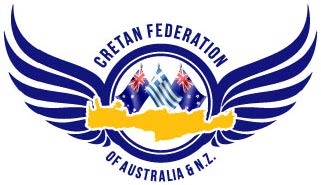Battle of Crete
Many Australian, British and New Zealand troops fought valiantly with their Cretan allies in the great battle, forging a special bond between the island’s people and the ANZAC troops.
The strategic position of Crete was of paramount importance for Hitler to gain a strong foothold in South Eastern Europe and allow his troops to continue their campaign in the middle East and prepare for new attacks on the Russian front.
On May 20 1941, the sky over Crete was filled with German paratroopers. Thousands of troops from various parachute and mountain divisions were dropped in the air raid.
Most of the allied anti-craft were destroyed. Undeterred, allied troops delayed their fire and began shooting at paratroopers as they descended. Many Cretans using older, self – loading guns, aimed and attacked the enemy. With limited ammunition and manpower, Cretan villagers and ANZAC troops fought gallantly together, eventually containing the German paratroopers to three main areas of the island.
Despite the heavy toll, after seven days of continuous fighting, the Germans deployed more air power and managed to override the island, capturing strategic military positions near Hania, and Rethimno in the west and Iraklio on the eastern flank of the island. Many ANZAC troops and Cretans continued fighting even though defeat was inevitable.
By June the 1st 1941, the Battle of Crete was over. However, its eventual occupation came at a heavy price for both sides. During the ten, days of fighting, 781 Australians and New Zealanders were killed and more than 3000 captured. During the evacuation Cretan villagers risked their own lives providing food and shelter for many ANZAC troops who remained on the island, hiding them from Nazi forces.
The courageous efforts of ANZAC troops together with the brave Greek and particularly Cretan people, dealt a severe blow to the Nazi’s.
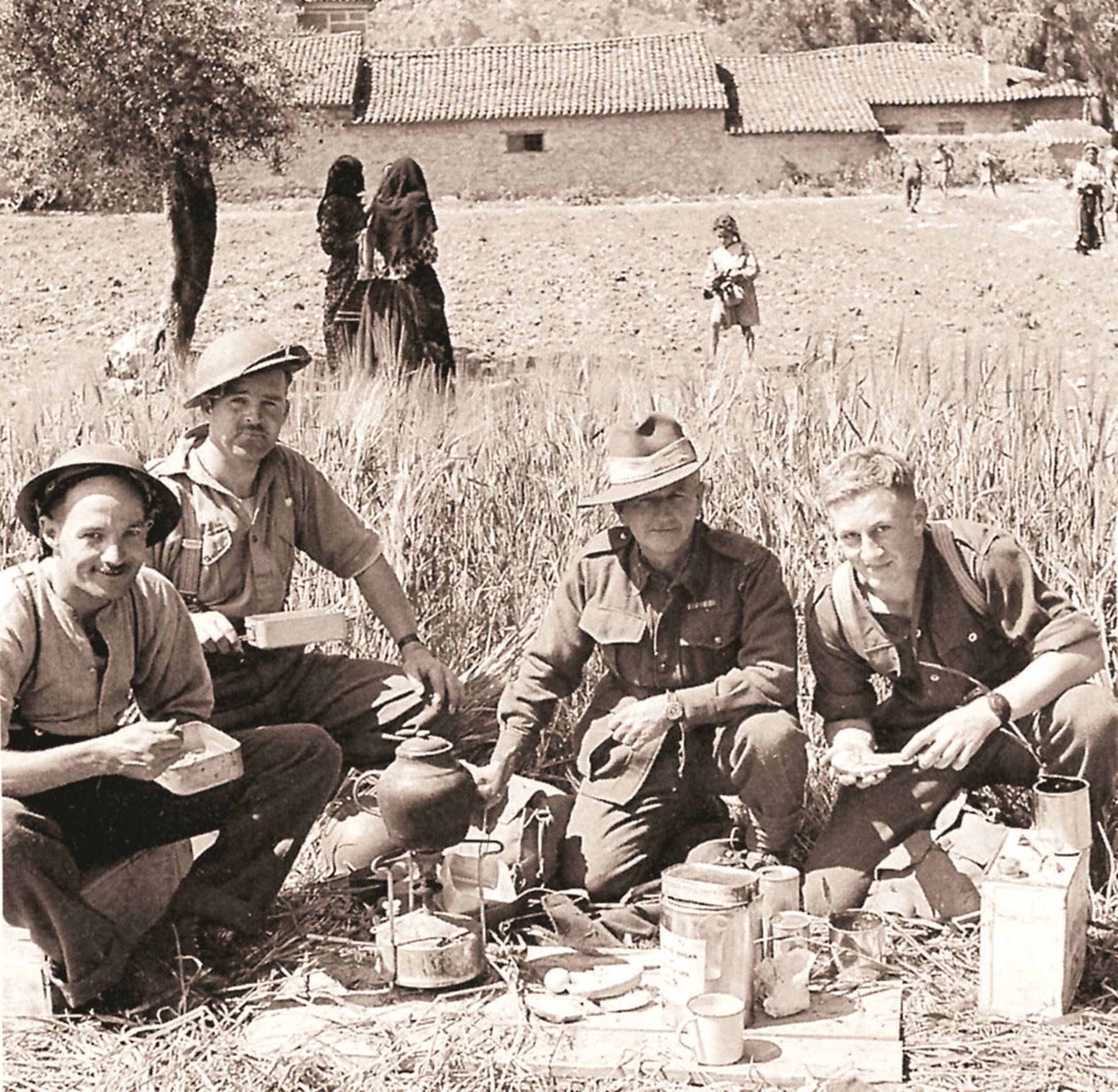
[…] the day of the Paratroops is over
This was encouraging talk for Student. Already his Airborne Corps was nearly back up to strength The many casualties had been replaced, equipment losses made good. He had ambitious plans for further operations In the Mediterranean against Cyprus, Egypt, and Malta. But after lunch, over coffee, Hitler shattered his hopes.
Turning to Student, the Fuhrer said quietly: “Of course, General you know that after Crete we shall never do another Airborne operation. The parachute arm is one that relies entirely on surprise. That surprise factor has now exhausted itself…the day of the Paratroops is over”.
Unterrnehmen Merkur-Operation Mercury
The XI Fliegerkorps was responsible for ferrying the paratroops to Crete using 500 JU-52’s and 70 DFS-230 light assault gliders, all together 8100 men were dropped on to Crete, 1860 men at Maleme, 2460 men at Hania, 1380 men at Rethymno and 2360 men at Iraclion. Crete was chosen because of the British airfields on the island, which were more than capable of striking the vital Ploesti oil fields in Rumania. Hitler’s forces needed all the oil they could get for the impending assault on Russia. Securing Crete would be tantamount to driving the British out of the Eastern Mediterranean; it would also be the first step towards Cyprus and the Egyptian Delta.
One major problem was the lack of transport aircraft, there was not enough to ferry all of the forces across in one go. There would have to be two waves, one in the morning and another in the afternoon, so enough time in between for the aircraft to return from Crete, refuel and return again back to the island. The lack of ships for the amphibious forces was overcome by the confiscation of caiques and fishing vessels from the coastal areas.
The allied troops on Crete (3 British battalions, 2 New Zealanders Brigades, 8 Greek Battalions and 6 Australian Battalions) had been aware of the impending assault through Enigma intercepts, the Germans had been provided with inaccurate intelligence and dropped into stiff resistance of nearly three times the amount of men they were expecting. The garrison had been re-enforced by allied troops who had retreated from the Greek mainland. In most of the drops they were sitting targets.
As the battle wore on and casualty reports started to come in to General Student’s HQ at the Hotel “Grande Bretagne” in Athens, it seemed that the battle was lost, but luck was on their side, the allies made some tactical mistakes and withdrew from positions around Hill 107, overlooking the Airfield at Maleme, which gave the Germans the upper hand and enabled them to land the desperately needed air landing troops of the Gebirgsjager on the airfield, although it was still coming under artillery fire. The allies pulled back in the face of a constant flow of fresh troops and began their retreat, first southwards across Crete and then by sea to North Africa.
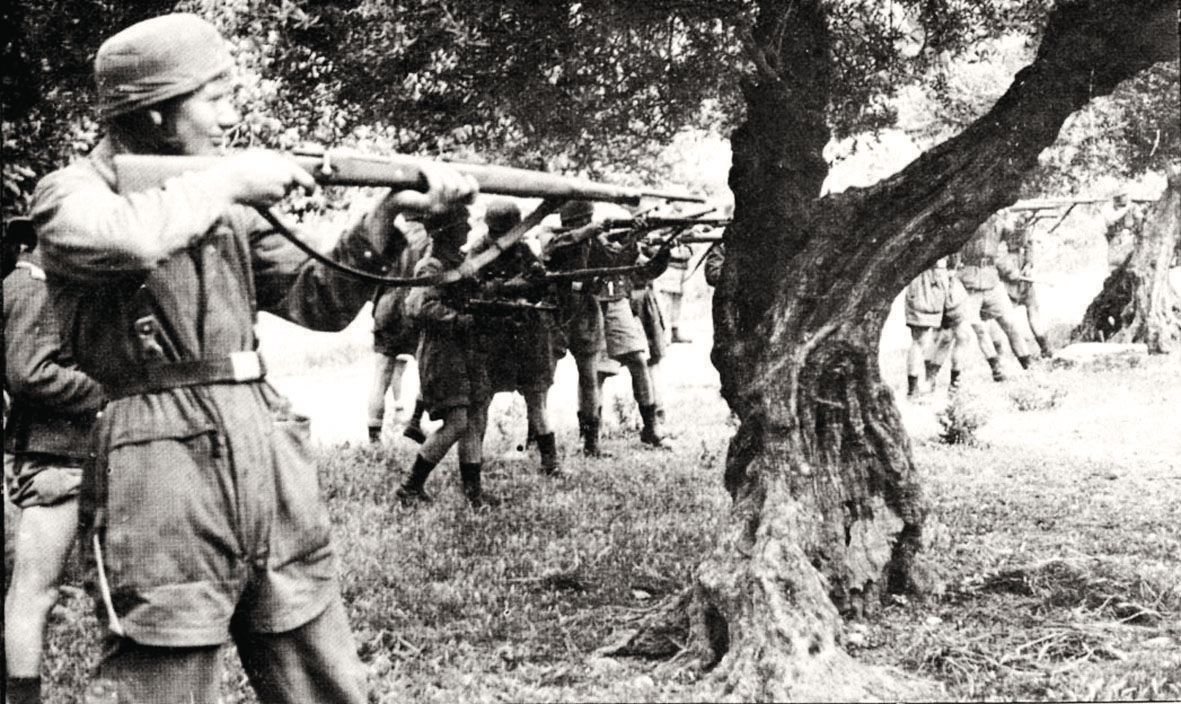
a detailed report
Airborne Landings (20 May 1941) Early on the morning of May 20, waves of dive bombers (Stukas- Dive Bomb Technique) and low flying fighter planes subjected the Maleme, Hania, and Souda Bay areas to the heaviest bombing and strafing attacks yet experienced by the seasoned troops manning the defenses. Most of the antiaircraft guns were put out of action and the defenders were forced to seek shelter. Bombs were dropped at the approaches to the airfields to put the telephone lines out of order.
At 08:00 the first gliders, each carrying twelve men, landed near the airfield and on the beaches near Hania. At the same time, approximately 2,000 parachutists jumped in waves of 200 each at fifteen-minute intervals. Two of every three parachutes in each wave carried containers with weapons and supplies.
At Maleme, the parachute troops jumped into strong enemy fire from infantry weapons, emplaced in positions built into the hills south of the airfield. Many of the paratroopers were killed during the descent or shortly after landing. Because of the concentrated enemy fire most of the men were unable to recover the weapons containers and had to rely on the pistol, four hand grenades, and large knife they carried.
One battalion of the assault regiment landed too far to the east among olive groves and vineyards near Maleme and was greeted by murderous machine gun and heavy weapons fire. Casualties were very heavy, and the medical platoon that had set up a first aid station in a farmhouse was overwhelmed by the constant influx of seriously wounded men. The gliders would have been completely destroyed by enemy fire, had they not been covered by clouds of dust, which formed as soon as they touched ground. The commander of the 7th Airborne Division, Generalleutnant Wilhelm Suessmann was killed during the approach flight, while Generalmajor Eugen Meindl, who was in command of the Maleme group, was critically wounded shortly after landing. Both the Maleme and Hania groups were therefore without their commanders.
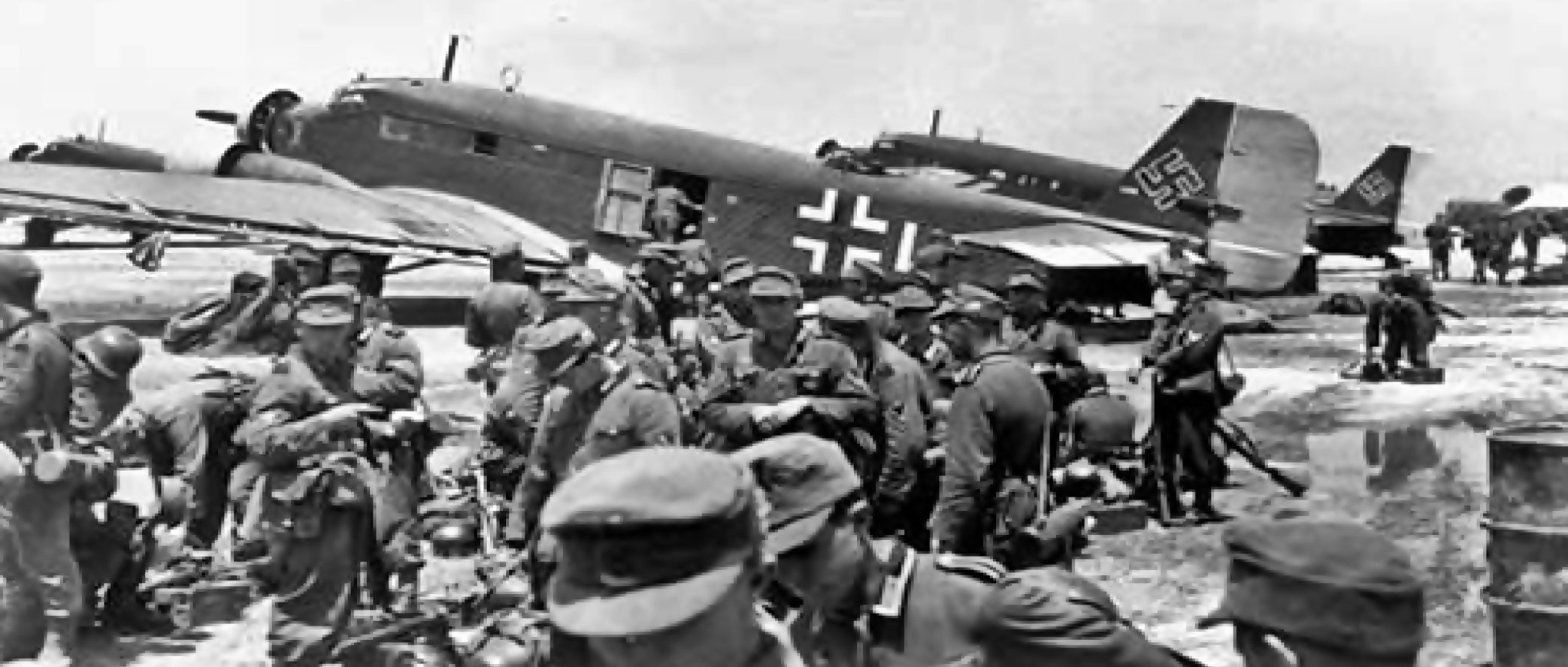
The Hania group, which was to capture the village of Souda and the town of Hania and eliminate the British command staff, located in that area, landed on rocky ground and suffered many jump casualties. The few men who were not wounded attempted to gather weapons and ammunition and establish contact with their comrades. Here the German paratroopers were opposed by New Zealanders who engaged them with small arms and heavy weapons fire from olive groves offering perfect camouflage for snipers and machine gun positions. The isolated German elements made little headway against the well-entrenched enemy forces. Meanwhile, the German command in Greece assumed that the operation was progressing according to plan because all troop carriers with the exception of seven returned to their bases. On this assumption, which was proved erroneous only after several hours had passed, the troop carriers were readied for the afternoon landings at Iraclion and Rethymno. Because of a delay in the refuelling, these planes arrived too late over the designated drop points and the paratroops were therefore without direct fighter and bomber support.
One parachute combat team in regimental strength jumped over each of the two points between 15:00 and 16:30. Running into very heavy British fire, the parachutists suffered even more casualties than at Maleme and failed to capture the airfields, towns, or ports. Some of the troops landed at the wrong points because the troop carriers had difficulty in orienting themselves. After they touched ground the Germans found themselves in an almost hopeless situation. Surrounded by greatly superior enemy forces, they struggled for survival. Their signal equipment had been smashed during the airdrop and they were therefore unable to establish contact with the nearest friendly forces. Although they were completely on their own and faced by an uncertain fate, they were determined to hold out to the end in the vicinity of the two airfields so that they would tie down the enemy forces and thus assist their comrades in the western part of the island. Air reconnaissance and radio messages had meanwhile rectified the erroneous picture of the first landings in western Crete.
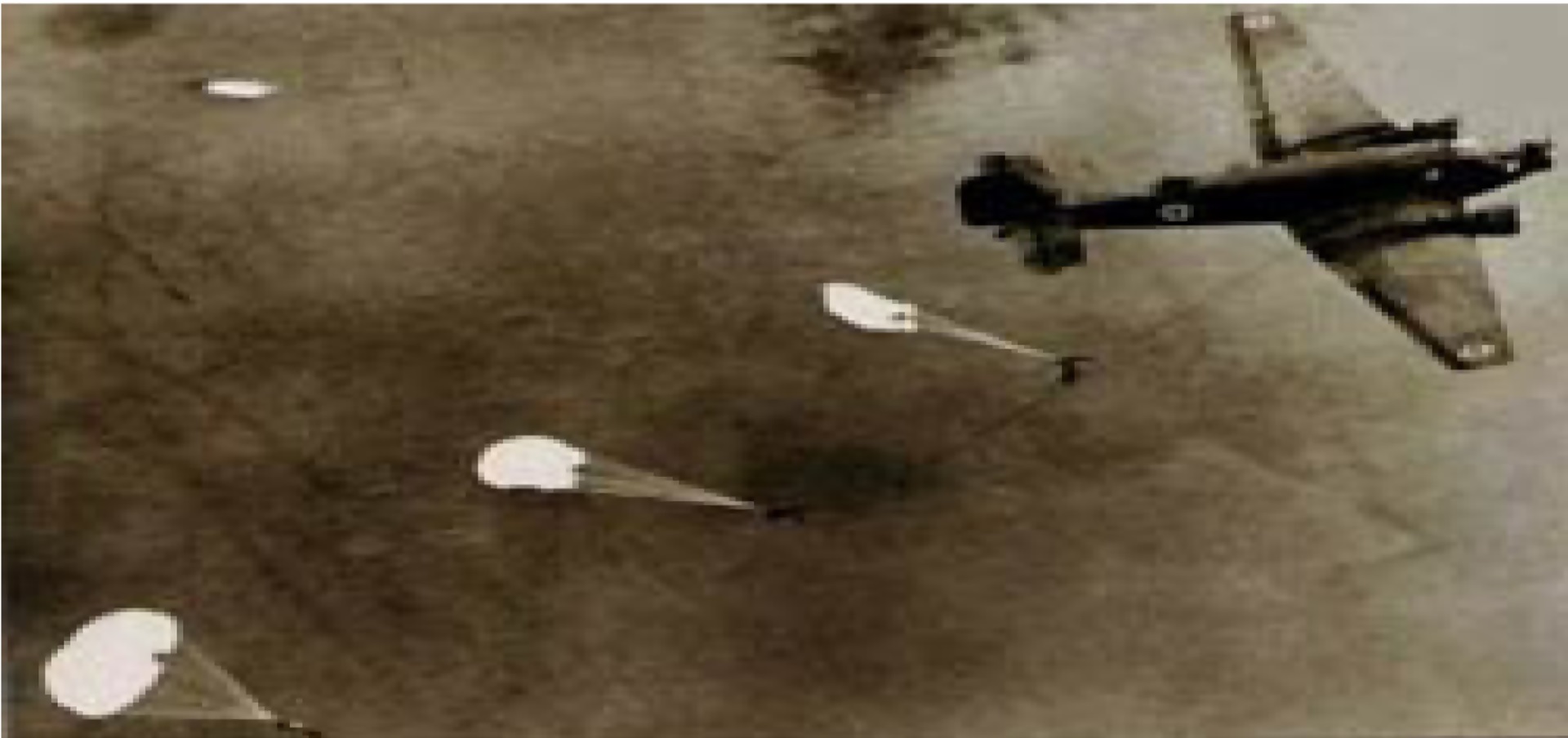
While the attacker had run into unexpectedly strong resistance and had failed to reach the objective of the day, the fury and strength of the onslaught surprised the defenders. Seaborne Invasion (20-22 May) During the night of May 20-21, a British light naval force broke through the German aerial blockade and searched the waters north of Crete. Admiral Schuster thereupon decided to call back to Milos the first naval convoy, which was approaching Crete under escort of an Italian destroyer. At dawn on May 21, German planes sighted the British ships and subjected them to heavy air attacks. One destroyer was sunk and two cruisers damaged.
At 09:00 the waters north of Crete were cleared of enemy ships and the convoy was ordered to continue its voyage in the direction of Maleme. During the day German dive bombers based on Skarpanto and Italian planes flying from Rhodes scored several hits on British ships returning to Crete waters, thereby preventing them from intercepting the Axis convoy.
The German troops on the island were anxiously awaiting the arrival of artillery, antitank guns, and supplies, but poor weather conditions so delayed the convoy that it could not reach the island before darkness. When it finally came around Cape Spatha at 23:00, a British naval task force suddenly confronted the convoy, which was on the way to Souda Bay to land reinforcements and supplies.
The British immobilized the Italian escort vessel and sank most of the motor sailers and freighters. Many German soldiers, most of them mountain troops, were drowned. Sea rescue planes, however, picked up the majority of the shipwrecked. The second convoy, which had meanwhile reached Milos, was recalled to Piraeus to save it from a similar fate. No further seaborne landings were attempted until the fate of Crete had been decided.
In the early afternoon four companies of parachute troops jumped from low altitudes above the vineyards near Maleme. The two that were supposed to land behind the enemy lines descended directly into well-camouflaged enemy positions and were almost completely wiped out. The other two joined the assault troops, which, by 17:00, succeeded in dislodging the enemy infantry from the town of Maleme and the hills surrounding the airfield. The airdrop was effectively supported by tactical air force attacks on enemy defenses. Throughout this fighting, however, the dive-bombers were unable to silence the British artillery pieces, which were particularly well camouflaged, and which, in order not to uncover their position, held their fire whenever German planes were in sight.
Troop carriers with the 5th Mountain Division troops began to land at Maleme airfield at 16:00, even though the field was still under intermittent artillery and machine gun fire. Low-flying planes kept the defenders’ fire to a minimum and the landings proceeded without major losses. A captured British tank was used as prime mover to clear the airfield of burned-out and damaged planes. As soon as the landing strip was cleared, planes came in and left without interruption. From that point on, reinforcements and supplies kept pouring in and the fate of Crete was sealed. Little by little the entire 5th Mountain Division was flown in. Even more important to the attack forces were the artillery pieces, antitank guns, and supplies of all types, which had been missing during the initial stage of the invasion and which were now being airlifted into Maleme.
On D + 5 the mountain troops outflanked the British positions east of Maleme, and on the next day they entered Hania, the capital of Crete, and occupied Souda Bay after a forced march across the mountains. During this fighting the British offered strong resistance and showed no signs of willingness to give in. They made very skilful use of the terrain and delayed the German advance by sniper and machine gun fire. Wire and mine fields protected some of their positions. Armed bands of Cretans fought fiercely in the mountains, using great cunning and committing acts of cruelty such as mutilating dead and wounded German soldiers. The air-ground coordination of the attackers occasionally failed to function during these days. At 13:10 on May 26, for instance, Dornier planes subjected elements of the 85th Mountain Regiment to a heavy bombardment, although the latter had laid out Swastika flags and fired white flares. The air attack continued until 14:00 and had a very detrimental effect on the ground troops’ morale. While the struggle for western Crete was raging, German reconnaissance planes reported that a few British planes had returned to Iraclion airfield on May 23, and that reinforcements were arriving by sea in the eastern part of the island.
If complete air superiority over Crete was to be maintained by the Luftwaffe, the return of British planes en masse had to be prevented by all means. It was therefore decided to reinforce the German troops in the Iraclion pocket by dropping hastily assembled parachute units. They were to take possession of the airfield and, until relieved by approaching ground forces, prevent the landing of British planes. Four companies of parachute troops were formed at Maleme and dropped in the vicinity of the Iraclion pocket west of the town. Immediately after landing on 28 May, the parachute units contacted the embattled pocket force and launched a concerted attack against the British positions, eliminating several enemy strongholds with the support of dive-bombers. After regrouping his forces during the night the German commander at Iraclion set out to capture the town and the airfield early on the next morning. At daybreak the German troops closed in on the British positions. Not a shots was fired. British naval vessels had evacuated the Iraclion garrison during the preceding night. By that time British resistance had crumbled everywhere. German supplies and equipment were landed at Souda Bay without interference from enemy naval or air units.
On 29 May, motorized reconnaissance elements, advancing through enemy-held territory, established contact with the German forces in the Rethymno pocket and reached Iraclion the next day. A small Italian force that had landed at Sitia Bay on the eastern tip of the island on 28 May, linked up with a German advance detachment two days later. After repeated encounters with enemy rear guards, the German forces reached the south coast of the island on 1 June. The struggle for Crete was thereby terminated. Despite the long delay in the issuance of evacuation orders, the British Navy was able to embark approximately 14,800 men and return them to Egypt. Subjected to severe losses and constant harassment by German planes, the Navy performed the evacuation during four nights.
